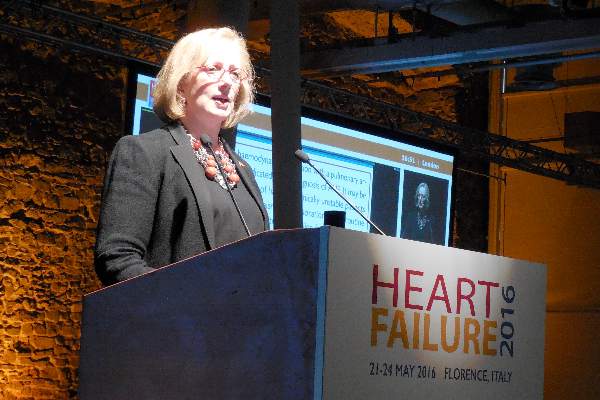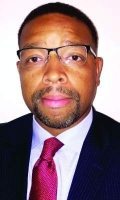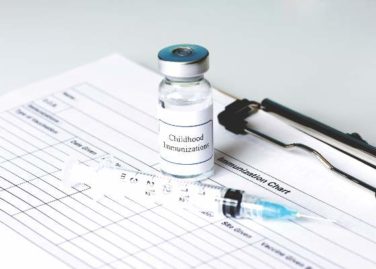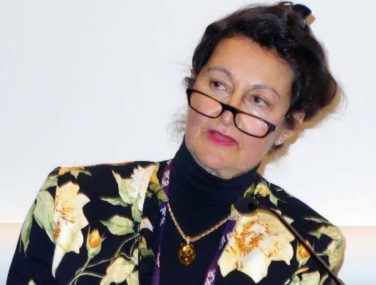AT HEART FAILURE 2016
FLORENCE, ITALY (FRONTLINE MEDICAL NEWS) – In patients with moderate to severe central sleep apnea, an implanted device that stimulates the phrenic nerve to optimize diaphragm-driven breathing met its efficacy and safety goals, based on results from a multicenter, controlled trial with 151 patients.
Among the 68 patients randomized to active treatment with the device and available for follow-up after 6 months on treatment, 35 patients (51%) had a 50% or better reduction in their apnea-hypopnea index compared with 8 of 73 patients (11%) who had this level of response following device implantation but without its active use.
This statistically significant difference in response to the study’s primary endpoint should pave the way for the device’s approval, Dr. Maria Rosa Costanzo said at a meeting held by the Heart Failure Association of the European Society of Cardiology.
Although the trial enrolled patients with a mix of disorders that caused their central sleep apnea, the majority, 80 patients, had heart failure. Other enrollees had their breathing disorder secondary to atrial fibrillation, hypertension, and other diseases, suggesting that the implanted device, called the remede System , is suitable for patients with moderate to severe central sleep apnea regardless of the etiology, said Dr. Costanzo, medical director for heart failure at the Advocate Medical Group in Naperville, Ill. Among the 80 heart failure patients in the trial, the percentage of patients on active treatment who had a 50% or better reduction in their apnea-hypopnea index closely matched the rate in the entire study group.
The results also demonstrated the treatment’s safety, with a 9% rate of serious adverse events secondary to either the device’s implantation or function during the 12 months following placement in all 151 patients enrolled. Patients in the control arm had a device implanted but not turned on during the first 6 months of the study. The device was turned on and they received active treatment during the next 6 months. The trial’s prespecified safety goal, developed in conjunction with the Food and Drug Administration, was a 1-year rate of freedom from a serious adverse event of at least 80%; the actual rate achieved was 91%.
Successful implantation of the device by electrophysiology cardiologists occurred in 97% of enrolled patients, a procedure that took an average of nearly 3 hours. Need for a lead revision, one of the serious adverse events tallied during follow-up, occurred in 3% of patients. No patients in the study died during 1-year follow-up. Most other serious adverse events involved lead reposition (but not revision) to better optimize the phrenic nerve stimulation. Dr. Costanzo likened the complexity of implanting and operating the device to placement and use of a cardiac resynchronization device.
The efficacy and safety of the device shown in this pivotal trial “should be plenty” for obtaining FDA approval, predicted Dr. Costanzo, the study’s lead investigator, which would make it the first approved intervention for central sleep apnea. “I think this is a game changer,” she said in an interview.
But coming less than a year after a report of an unexpected excess-mortality rate in heart failure patients treated for central sleep apnea with an adaptive servo-ventilation device ( N Engl J Med. 2015 Sept 17;373[12]:1095-1105 ), heart-failure specialists are now more demanding about the data needed to prove safety and clinical benefit from an intervention that targets central sleep apnea and sleep-disordered breathing.
“I think we need an endpoint that involves hospitalizations and death” to more clearly demonstrate meaningful clinical benefit and safety, said Dr. Mariell Jessup , a professor of medicine and heart failure specialist at the University of Pennsylvania in Philadelphia. Following the experience with increased mortality from servo-ventilation “we now need to demand” more comprehensive safety data in sleep trials. Also, the approach tested in this study involves “putting a device into patients, so it’s not completely benign,” she said in an interview. “A lot of things that we thought made a lot of sense, like treating a heart-failure patient’s sleep apnea, turned out to cause things we didn’t expect. We need to be cautious.”
Dr. Costanzo agreed that there is need for additional studies of the phrenic-nerve stimulating device in larger number of heart failure patients that involve heart-failure-specific endpoints. But she also stressed how life changing this intervention was for some of the patients in the study. “The transformation of their lives was unbelievable. They said things like ‘I feel I have my life back.’ ”
She also stressed that the mechanism of action of phrenic nerve stimulation is dramatically different from more traditional sleep-apnea treatments that have relied on positive air pressure devices.
Phrenic nerve stimulation causes contraction of a patient’s diaphragm that creates negative pressure within the chest cavity in a manner similar to that of natural breathing. The stimulation is adjusted to make it imperceptible to patients, and stimulation does not occur when a patient is standing or sitting, only when lying down. “With positive airway pressure in patients with advanced heart failure you reduce venous return, and when a patient’s heart is sick and depends on preload this can hurt the patient. Phrenic nerve stimulation does the opposite. It contracts the diaphragm and creates negative pressure, so it anything it facilitates venous return,” she explained.
The trial, run at 31 centers, mostly in the United States with the others in Europe, enrolled patients with moderate to severe central sleep apnea with an average apnea-hypopnea index of 45 episodes per hour while sleeping. The average age was 65 years, about 90% of the patients were men, and average body mass index was 31 kg/m2.
In addition to the primary efficacy endpoint of reduced apnea-hypopnea index, the patients on active treatment also showed statistically significant reductions compared with baseline in central apnea episodes and in daytime sleepiness measured on the Epworth Sleepiness Scale and an improvement in the patients’ global assessment of their condition. The changes did not occur in the control patients. In the treated patients central apnea episodes fell from an average of 32 episodes per hour at baseline to an average of 6 central episodes an hour after 6 months on treatment.
Dr. Costanzo is a consultant to and has received research support from Respicardia, the company developing the tested phrenic-nerve stimulation device. Dr. Jessup had no disclosures.
On Twitter @mitchelzoler





